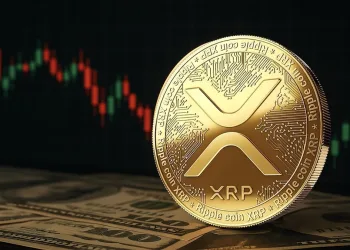- Digital asset inflows hit $3.3B, pushing 2024 totals to a record-breaking $10.8B
- Bitcoin led with $2.9B in inflows, while Ethereum saw strongest demand in 3 months
- XRP broke its 80-week inflow streak, facing $37.2M in outflows amid shifting sentiment
Digital asset investment products experienced a historic surge last week, attracting $3.3 billion in net inflows. According to Coinshares report, this latest wave pushed year-to-date (YTD) totals to a record $10.8 billion, surpassing all previous yearly highs. Investors are increasingly turning to digital assets as traditional markets show signs of strain.
Growing concerns over the U.S. economy, following Moody’s credit downgrade and rising treasury yields, have contributed to this trend. As a result, many are seeking more resilient and diversified portfolios. Total assets under management (AuM) briefly peaked at $187.5 billion, setting a new industry benchmark.
Bitcoin Leads While Ethereum Gains Traction
Bitcoin continues to dominate the market, accounting for $2.9 billion of the total inflows last week. This figure represents a significant portion of 2024’s total digital asset inflows so far. The recent price appreciation has caught the attention of both bulls and bears.
Short-Bitcoin investment products saw $12.7 million in inflows, the highest since December 2024. This indicates that some investors are hedging against potential pullbacks.
Ethereum also gained substantial momentum, bringing in $326 million last week. This marked its fifth straight week of inflows and the strongest performance in over three months. The renewed interest suggests improving investor sentiment toward Ethereum, possibly fueled by optimism around its evolving utility and upcoming upgrades.
XRP Sees Rare Setback Amid Global Activity
In contrast to Bitcoin and Ethereum’s success, XRP faced a notable downturn. The asset experienced $37.2 million in outflows, ending an impressive 80-week streak of continuous inflows. This sudden reversal signals a potential shift in investor confidence or profit-taking behavior following prolonged inflows.
Globally, the U.S. remained the dominant force, drawing in $3.2 billion of the total weekly inflows. Other countries contributed modestly, with Germany adding $41.5 million, Hong Kong $33.3 million, and Australia $10.9 million. Switzerland stood out as an exception, seeing $16.6 million in outflows as local investors capitalized on price strength to secure gains.














